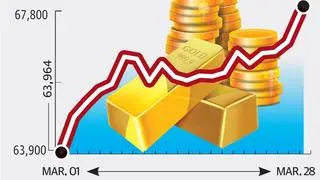Many individuals prefer out-of-the-money (OTM) strikes, especially when they begin options trading, because the risk capital involved is lower. This week, we discuss why options trading is not about buying low-premium strikes but a trade-off that relates risk capital to the probability of winning.
Gains Vs Losses
Stock Y trades at 110 and stock M trades at 2,500. Assuming both stocks belong to the same sector, which would you buy? You must apply a valuation metric, say, price earnings multiple (PEM), to make a meaningful comparison between the stocks. What if stock M trades at a PEM of 10 and stock Y at a PEM of 55? Stock M appears cheap despite trading at a higher price.
Trading options is similar. If absolute price matters, then deep OTM options are cheaper. But such options expire worthless most of the time. Also, deep OTM options generate gains only when the underlying moves sharply in quick time. For instance, compare the next-week 17700 Nifty call and the 18100 Nifty call. The former trades at 251 and the latter at 87. What if the Nifty Index moves from 17662 to 17850 three days after you buy either of the strikes? The 17700 strike could gain 55 points, whereas the 18100 strike could gain 14 points. For meaningful comparison, some prefer to look at the percentage gained, whereas others look at gains with equivalent risk capital.
Consider percentage gained. The expected return on 17700 call is 22 per cent (55 points over 251), whereas the expected return on 18100 call is 16 per cent (14 points over 87). Considering equivalent risk capital, you could buy nearly three contracts of 18100 call with the capital required to buy one contract of 17700 call. So, the 17700 call could have generated 55 points against 42 points on the 18100 call. Of course, most novice traders prefer deep OTM strikes because such options require lower capital outlay. So, the argument based on equivalent risk may not hold water.
What happens if the Nifty Index rises to 17850 just three days before the contract expires? The 18100 call could lose 37 points, whereas the 17700 could lose about 10 points. This suggests that deep OTM calls can suffer large losses and typically generate gains only if the underlying moves sharply in quick time. If you are confident of such a movement in the underlying, you should buy futures or if capital is a constraint, an immediate OTM strike.
Optional reading
You must trade-off risk capital and probability of making gains while buying options. This means you must not buy deep OTM or deep ITM (in-the-money) options. The optimal strike often would be the at-the-money (ATM) strike or the immediate OTM strike. Both these strikes have the greatest chance of generating gains with the liquidity needed to take profits with European options. That is, your trade-off between time decay and delta is the best with these strikes.
The author offers training programmes for individuals to manage their personal investments











Comments
Comments have to be in English, and in full sentences. They cannot be abusive or personal. Please abide by our community guidelines for posting your comments.
We have migrated to a new commenting platform. If you are already a registered user of TheHindu Businessline and logged in, you may continue to engage with our articles. If you do not have an account please register and login to post comments. Users can access their older comments by logging into their accounts on Vuukle.